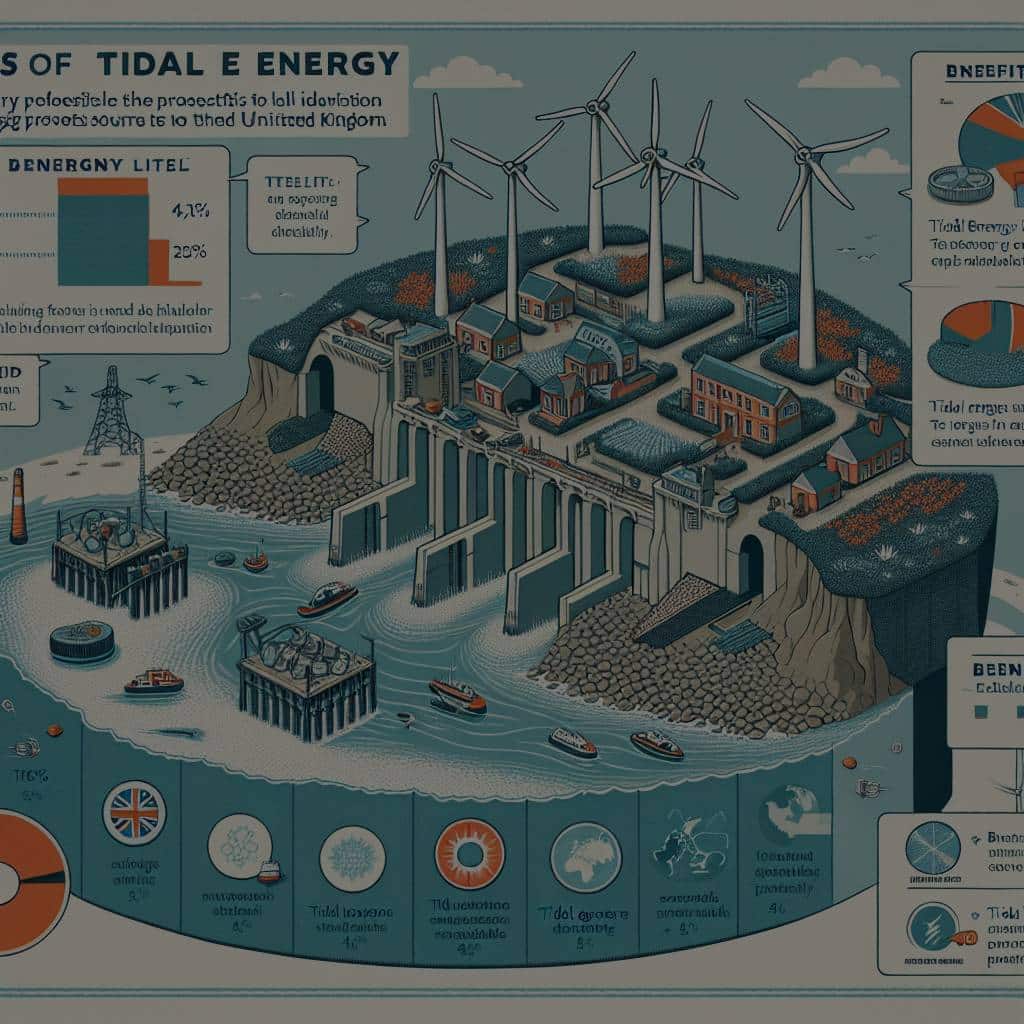What Are the Prospects for Tidal Energy as a Renewable Source in the UK?

As the world grapples with the urgent need for sustainable energy solutions, tidal power presents an exciting and largely untapped resource. Particularly in the UK, with its extensive coastline and significant tidal ranges, tidal energy has the potential to play a pivotal role in the country’s renewable energy mix. This article delves into the subject of tidal energy, its advantages, development, and economic and environmental implications.
Understanding Tidal Energy Technology
Before assessing the prospects of tidal power in the UK, it’s important to have a clear understanding of the technology behind it. Tidal energy is a form of renewable power generated by the movement of water caused by the gravitational interactions between the Earth, Moon, and Sun. Since the movement of tides is predictable, it offers a reliable source of power that can be harnessed using different types of turbines.
This might interest you : What Are the Latest Advances in Anti-Theft Technology for Bicycles in Urban Areas?
There are mainly two types of tidal energy technologies: tidal stream turbines and tidal barrages. Tidal stream turbines, similar to wind turbines, are anchored to the sea floor and harness the kinetic energy of moving water. On the other hand, tidal barrages are essentially dams built across estuaries. The barrages generate power as water flows in and out of the estuary.
Tidal energy has a number of environmental advantages over other forms of power generation. Unlike fossil fuels, it doesn’t produce harmful emissions or contribute to global warming. With the UK committed to achieving net-zero emissions by 2050, tidal energy could be an invaluable asset.
Topic to read : Discover the fast track to learn spoken arabic with ease
The Potential of Tidal Power in the UK
The UK is uniquely positioned to harness tidal power. With almost 80% of its borders surrounded by water, the UK has access to some of the highest tidal ranges in the world, specifically in the Severn Estuary and the Pentland Firth. This geographical advantage, coupled with the country’s commitment to renewable energy, positions tidal power as a significant player in the UK’s energy future.
According to the Offshore Renewable Energy (ORE) Catapult, tidal power has the potential to meet up to 20% of the UK’s current electricity demand. This equates to an installed capacity of around 30GW. The development of tidal power could also create thousands of jobs across the country, boosting local economies and contributing to the broader economic recovery.
The Economic Implications of Tidal Energy
While the economic prospects of tidal energy in the UK are promising, the path towards commercial viability is not without challenges. Currently, tidal power is more expensive to produce than wind or solar energy. This is largely due to the high upfront costs associated with the deployment of tidal energy technology.
However, as with any technology, these costs are expected to reduce as the industry scales up and technology improves. Greater investment in R&D could lead to more efficient turbines, which would drive down costs and boost the economic feasibility of tidal energy. It’s also worth noting that unlike wind or solar power, tidal energy has the potential to provide a consistent and reliable source of power, which could outweigh the higher initial cost.
Environmental and Coastal Impact of Tidal Energy
As with any form of power generation, tidal energy has an environmental footprint. The installation and operation of tidal turbines could potentially impact marine ecosystems. There is a risk of collisions between marine life and the turbines, and the electromagnetic fields produced by the turbines may disrupt marine animal behaviour.
However, compared to other energy sources, the environmental impact of tidal power is relatively minimal. The turbines are submerged, making them less visually intrusive than wind farms. Plus, the slow rotation speed of the turbines reduces the risk of collisions with marine life.
It’s also important to consider the positive environmental impact of tidal energy. By generating clean, renewable electricity, tidal power can contribute to reducing CO2 emissions and combatting climate change. The development of tidal energy could also stimulate the revitalization of coastal communities, creating jobs and driving economic growth.
Overall, while tidal energy has its challenges, it has an undeniably promising future in the UK. With the right investment, policies, and technology improvements, tidal power could play a significant role in the country’s journey to a sustainable, clean energy future.
Furthering Tidal Power Development in the UK
Tidal power development in the UK is not without its challenges. For one, the high initial costs of installing tidal power plants have been a deterrent for many investors. Despite this, the potential benefits of tidal energy suggest that these costs could be offset by long-term gains. The predictability of tides makes tidal energy a reliable source of power, compared to the intermittency of wind or solar power. Plus, the potential for driving down costs with technological advancements and increased scalability adds to the appeal of tidal power.
Investment in research and development is pivotal for the growth of the tidal power industry. By prioritizing advancements in power plant designs and tidal stream technologies, the industry can significantly reduce costs and improve efficiency. One such improvement could be the development of smaller, more efficient tidal turbines that can harness tidal currents with less impact on marine life.
Moreover, the rise of tidal power can have a positive ripple effect on coastal communities. The installation and maintenance of tidal power plants can provide a steady source of jobs, thereby stimulating local economies. Additionally, the clean, sustainable energy produced by these plants can help these communities break away from their dependence on fossil fuels and embrace a more sustainable future.
Government support is also crucial in this development phase. Policies that incentivize investment in tidal power and provide subsidies for research could significantly boost the growth of the industry. Ultimately, with the right blend of investment, innovation, and policy support, the UK could become a world leader in tidal power.
Conclusion: Tidal Energy, the Future of Renewable Energy in the UK
In conclusion, tidal energy holds abundant promise for the UK. The country’s geographical advantage, coupled with its commitment to achieving net-zero emissions, positions it as an ideal candidate for exploiting tidal power. While the initial costs of installation remain high, the reliability and predictability of tidal energy make it a compelling choice for a sustainable energy source.
The development of tidal energy could also be a boon for the UK’s coastal communities, offering not only a source of clean power but also job opportunities and economic growth. The environmental impact of tidal power is significantly lesser than that of fossil fuels, making it a key player in the fight against climate change.
However, for tidal power to realize its full potential, focused investment, technological innovation, and supportive policies are necessary. The challenges are significant, but the potential rewards – both economic and environmental – make tidal energy an exciting prospect for the UK’s energy future.
The journey towards a sustainable energy future is complex and multi-faceted. While wind and solar energy have dominated the renewable energy scene so far, it is high time for tidal energy to take its rightful place in the mix. The cause for tidal power in the UK is strong and with the right support and attention, it could well be a tide that lifts all boats.
